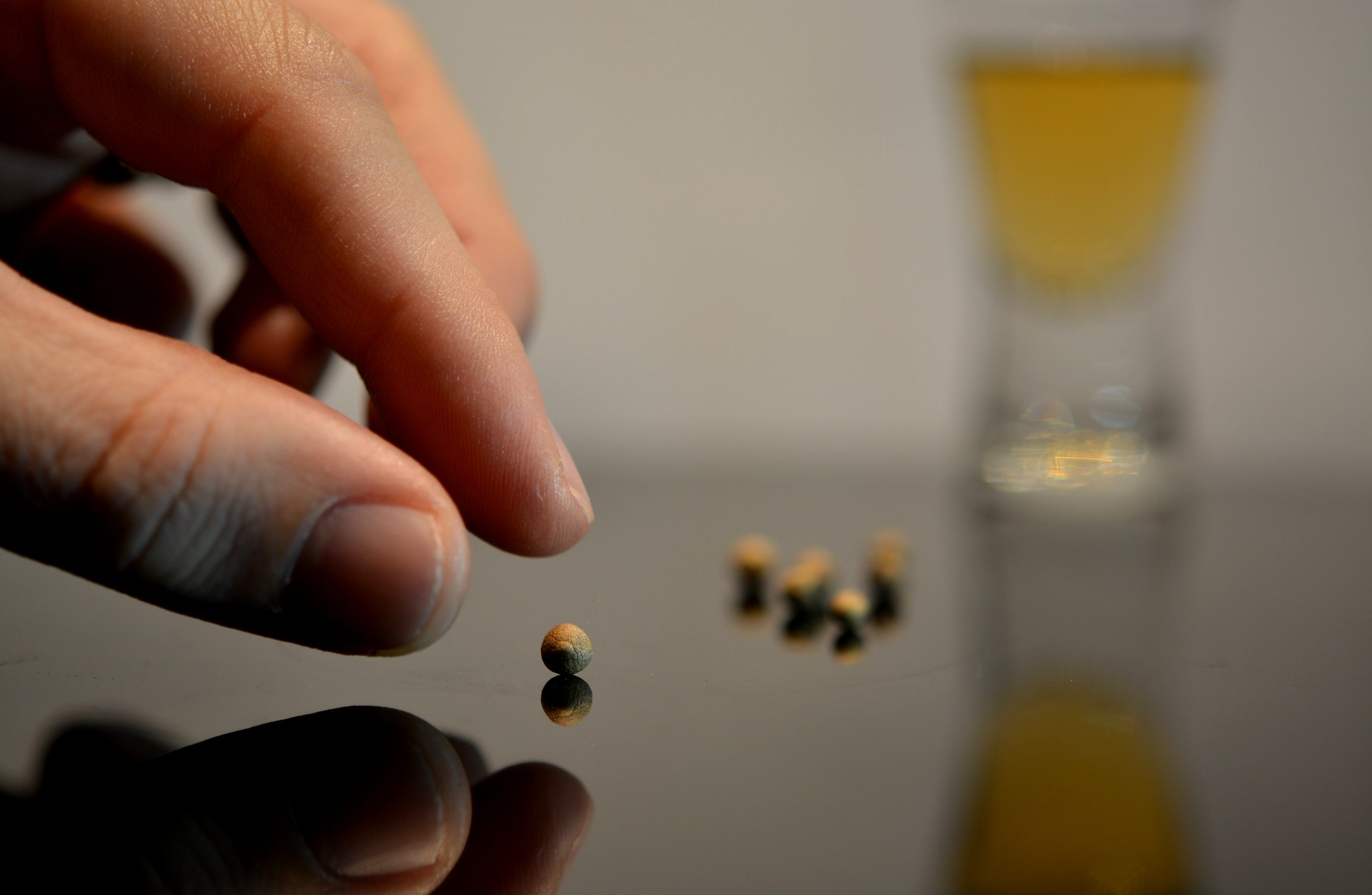A new review published in the Journal of Clinical Psychiatry examines the trend of increasing placebo response and decreasing antipsychotic treatment effects in drug trials submitted to the US Food and Drug Administration (FDA).
Led by Mathangi Gopalakrishnan of the University of Maryland, the researchers conducted a review of clinical trials submitted as part of new drug applications to the FDA between 1991 and 2015. Their results show that antipsychotic trial success rates have decreased while the mean placebo response has increased over this time. Placebo response refers to the measured effects of subjects in a study who take a non-active placebo rather than the study drug. The authors write:
“Our analyses revealed a consistent and continuing trend of increasing placebo response and diminishing treatment effect over time post-2009, particularly in North American trials. These findings suggest a continuation of the trends of increasing placebo response, decreasing treatment effect, and increased trial failure rate seen in the pre-2009 acute schizophrenia trials”.

Antipsychotics remain the first line of treatment for schizophrenia and other psychotic disorders, especially in the United States. They are some of the best-selling drugs in the country and can be highly profitable for the companies that sell them. They are often used off-label for disorders other than schizophrenia, such as depression and anxiety.
Despite their widespread use, antipsychotics have come under increased scrutiny over the past few years. Some researchers have challenged their necessity by documenting the effectiveness of social relationships and familial connections in protection from schizophrenia. Other research has found better long-term results in patients who were not on antipsychotics. Additionally, antipsychotics are connected to worse performance on cognitive tasks. In a recent survey of antipsychotic user experience, the largest one to date, service users overwhelmingly reported adverse outcomes on antipsychotics.
Researchers are also addressing their severe and debilitating side effects like akathisia, which for years was downplayed as mere restlessness. As recently as December 2019, the FDA approved another new antipsychotic as a treatment for schizophrenia despite evidence that adding additional antipsychotics to already existing ones does not necessarily improve symptoms.
The current study looks at the trend of increasing placebo response and decreasing treatment response in new drug application trials for acute schizophrenia. The researchers observed this trend in clinical trials submitted to the FDA between 1991 and 2009. These were randomized, placebo-controlled, double-blind trials, 32 of which were in the pre-2009 period. Post-2009, there were three new drug application projects with 14 trials in them.
For the review, researchers looked at the effectiveness of antipsychotics in various trials and compared the period from 1991 to 2009 with 2009 to 2015 using outcomes measured by the Positive and Negative Syndrome Scale (PANSS). PANSS is a popular interview measure used by mental health experts to assess the presence and extremity of positive, negative, and other symptoms of schizophrenia.
The effectiveness of a drug was measured by observing the average change from baseline score on PANSS to the score measured at the end of the trial, using a last observation carried forward analysis. In other words, drug treatment effectiveness was measured by how much the PANSS scores had changed over time; trials were all 4- to 8-week studies.
The placebo response rate was calculated as the amount of change from baseline PANSS scores. The treatment effect, which refers to how effective the actual drug is, was calculated as average change from baseline PANSS score seen in the drug treatment group minus average change from baseline PANSS score in the placebo treatment group. Simply put, the drug was considered effective if it made a significant change when compared with the performance of the placebo.
The researchers found that between the pre- and post-2009 period, trial success rates declined from 78% to 57%, while the placebo response rate increased from -6.4 to -10.5. Simultaneously, the treatment effect decreased from -8.6 to -5.8.
A 2012 study had previously found similar results of increasing placebo effects and decreasing antipsychotic treatment effects. This decrease in treatment effect and increase in placebo effect was especially true for trials conducted in North America. In both the pre- and post-2009 periods, dropout rates remained higher for North American trials when compared with other regions.
They found that the trend of decreasing drug effectiveness and increased placebo response increased in the period between 2009 and 2015. They write:
“During the post-2009 period, the success rate in North American and multiregional trials were 25% and 75%, respectively. The success rate for the North American trials decreased markedly from 81% during the pre-2009 time to 25% during the post-2009 period.”
It should be noted that over time, the sample size used in the clinical trials was increasing, which is supposed to gather more accurate results. Additionally, the baseline severity of the disease stayed the same while the treatment effect decreased.
According to the researchers of this study, the fact that drug trials are now multiregional means their approval can be quicker and thus the access to patients faster. Multiregional trials also showed a larger drug treatment response as compared to North American trials in both pre- and post-2009 periods, and while they too showed a decline in treatment effect, it was not as large as that seen in North America.
The researchers believe this increasing placebo and decreasing treatment effect to be a worrying trend, and they propose several explanations. They suggest that the trend may be influenced by studies with patients who have been experiencing symptoms for longer, the use of benzodiazepines, and the use of different outcome measures in separate trials. However, it should be noted that the contention that a longer duration of untreated psychosis leads to worse treatment outcomes has recently been challenged.
To decrease this placebo response, they suggest the use of machine learning and big data” to create a better criterion of who to include and exclude in a clinical trial, and to identify people who will respond better to placebo.” However, the use of machine learning in psychiatry, while gaining popularity, has yet to show usable results.
In the end, the study authors conclude:
“With more pharmaceutical sponsors embracing multiregional clinical trials for regulatory submissions, trial designs and conduct that incorporates mechanisms to minimize placebo response need to be carefully considered to increase the efficacy of drug development in schizophrenia.”
****
Gopalakrishnan, M., Zhu, H., Farchione, T.R., Mathis, M., Mehta, M., Uppoor, R. & Younis, I. (2020). The trend of increasing placebo response and decreasing treatment effect in schizophrenia trials continues: An update from the US Food and Drug Administration. Journal of Clinical Psychiatry, 81(2). DOI: 10.4088/JCP.19r12960 (Link)















“Antipsychotics” just like stimulants and “antidepressants” cause a whole list of side effects that are noticeable. One study found that around 85% of clinicians and patients given the drug in clinical trials know they are on the drug. This means these trials are not double blind placebo studies. They are trials comparing the drug and placebo where pretty much everyone knows if they are given the drug. We need to stop calling corporate clinical trials double blind placebo studies because that is false.
Report comment
Off label use.
This is not possible when they were not supposed to ever be allowed to be used on any living thing.
A hammer to the head will also cause an outcome.
The FDA is useless.
Report comment
While they’re at it, why don’t they have machine patients as well? That way they can have 100% treatment successes.
Report comment
And the machines can’t even argue or refuse their “meds!” What a perfect plan!
Report comment
I find this review encouraging.
I suspect we’re seeing a response to the steadily increasing outcry against gamed RCTs in which trials aren’t pre-registered and drug companies farm out a large number of small trials; relying on publication bias to ensure the ones that find their way into journals are the ones that are ‘successful’ purely by chance. Then a meta-analysis comes along, only finds the ‘successful’ ones, lumps them all together and viola, p<0.05; a significant positive result.
These days meta-analysts are doing more checking for publication bias (e.g. scattergram the effect size on X, the sample size on Y and if your Bell curve is truncated on the left you've got biased data) and the old tricks are fooling fewer people. So now we're seeing larger studies with weaker results.
We've still got a long way to go before the reputation of RCTs is rehabilitated but it's a start.
Report comment
Ayurdhi
Thank you so much for your valuable contributions to MIA. We all really appreciate it.
Best
Jim
Report comment
Since the antipsychotics can create the negative symptoms of schizophrenia via neuroleptic induced deficit syndrome, and they can also create the positive symptoms of schizophrenia via anticholinergic toxidrome. It’s no wonder that placebos, which are known to be effective, might show better response rates than the neuroleptics.
Report comment
Two viable explanations: 1) the researchers are less able to get away with hiding “negative” results with new laws/regulations regarding availability of unpublished research. 2) Placebo response is a large part of the recorded “benefits,” and as is common among drugs of any sort, decreased confidence by the public in a particular drug over time leads to an increase in placebo effects.
Report comment